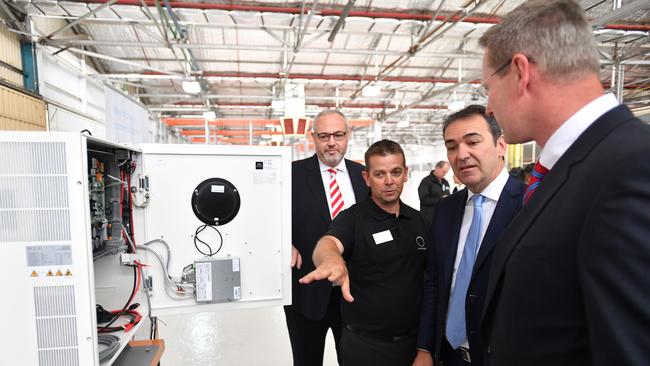Battery technology tipped to sap earnings of major energy players
The widespread take up of battery technology will likely sap the earnings of the big energy players, says Macquarie.

Evolving battery technology is poised to disrupt electricity markets as a desire to become sustainably green emerges and batteries make it economically positive, Macquarie analysts say.
As more solar enters the grid, feed-in-tariffs are likely to fall aiding battery economics and in addition, governments are now providing subsidies, the analysts said.
“Batteries are a structural challenge for the industry as they balance the oversupply of energy at any one particular time, thus reducing volatility,” Macquarie said.
“Unless grid pricing is rapidly changed, incentives are re-emerging for retail and small-to-medium enterprises to use batteries to lower broader costs.
“For retailers that leads to lower sales of higher priced electricity.”
Governments are embracing battery technology with subsidies to accelerate adoption not only at the retail level but also at the grid level with projects like Snowy 2.0, Macquarie said.
Wind and solar generators can start to use batteries rather than a purchasing power agreement with the retailers, adding more competition to the market.
That is likely to create long term earnings pressure for the major energy players and drag on the long-term multiples of AGL and Origin Energy, the analysts said.
Labor leader Bill Shorten last month set out an energy policy targeting one million household battery installations by 2025.
That many batteries in the market could be as much as 3 to 4 per cent of longer-term earnings for AGL and as much as 6 to 7 per cent for Origin, the analysts said.
They forecast that the industry would lose about $33m in earnings by 2020 with the initial battery targets set by state and territory governments around the country.
“A solar or battery customer profile is higher volatility, thus their long-term value to a retailer also drops unless repriced, which is politically contentious,” Macquarie said.
The analysts also pointed out that batteries aren’t limited to households, saying that Hydro, solar and lithium are all growing in the wholesale market.
“Hydro is particularly important to provide dispatchable energy to support ongoing renewable growth,” the analysts said.
“This is likely to see the market oscillate between oversupplied and balanced, post coal withdrawal.
“This is a potential area for industry to invest, albeit we think it will remain the domain of infrastructure funds, especially as batteries do not carry wear and tear like thermal plants.”
AGL has a 26 per cent market share which could result in a pre-tax impact of about $76m or about 4 per cent of earnings for fiscal year 2025, the analysts said.
Origin has a market share of about 31 per cent which means the impact could be about $91m for fiscal year 2025, putting 7.2 per cent of the company’s net profit after tax at risk, Macquarie said.


To join the conversation, please log in. Don't have an account? Register
Join the conversation, you are commenting as Logout